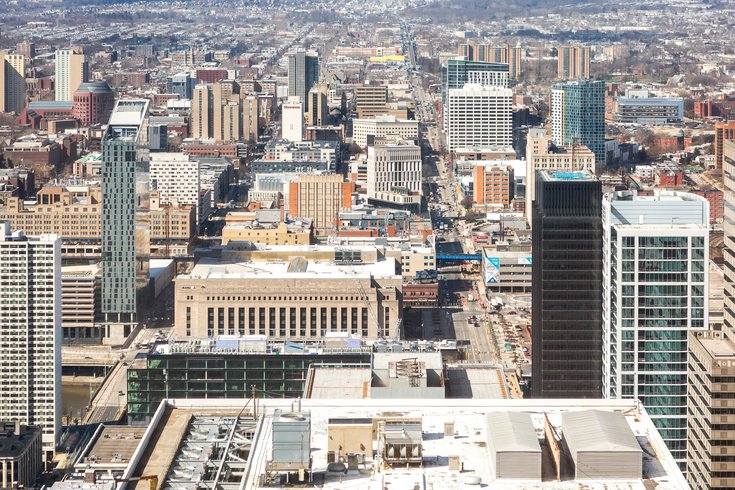
July 23, 2023
 Thom Carroll/For PhillyVoice
Thom Carroll/For PhillyVoice
'Heritage West: West Philadelphia Community Archaeology Project,' which aims to recover forgotten histories of the Black Bottom, will begin an excavation project on Lancaster Avenue next month.
A community archaeology project spearheaded by the University of Pennsylvania and Penn Museum aims to recover the forgotten stories of the Black Bottom, the West Philadelphia neighborhood that was demolished to make way for what is now University City.
"Heritage West: West Philadelphia Community Archaeology Project" uses archaeological investigation, archival research, oral histories and technology to unearth the history of the neighborhood, from its 19th century origins to the present day, officials from Penn Museum said in a press release. An excavation of the Community Education Center's site on the 3500 block of Lancaster Avenue will begin in August and will continue through November.
This area was chosen for a few reasons, museum officials said. The block has been home to community centers, art spaces, theaters and residences for more than 200 years. The area used to be lined with seven homes, has evidence of some of the earliest houses built in West Philly during the 1850s and has remained largely untouched after those homes were demolished in the 1960s, displacing Black Bottom residents.
Since the project began in 2021, with neighborhood pop-ups providing a written timeline of West Philly's history and asking residents to fill in the blanks, the "Heritage West" team has searched archival records to find stories of early residents who lived in the Black Bottom in the 1800s and early 1900s. The team believes that digging up the structural remains of their homes may yield objects that they left behind.
The "Heritage West" project is a first step towards reparative justice, uplifting rarely documented stories and "righting the wrongs" done to the Black Bottom community under the guise of urban renewal.
The area now known as West Philadelphia has its origins in the 1840s, when it was consolidated into the city just 10 years before the rest of Philadelphia County was brought into the city. Originally a rural area, expanded transportation is part of what helped the area grow the area throughout the 19th century.
Penn planned its campus in the 1870s and Drexel University was founded in the 1890s, solidifying the area as a center of higher education. Still, the "University City" label would not be commonly used until the mid-20th century.
The neighborhood was home to hundreds of Black families, many of whom left their doors unlocked because they trusted their neighbors and spent a lot of time with them, Billy Penn reported in 2015. However, by the 1950s, the Black Bottom was designated by the city as a redevelopment zone. Around that time, Penn and Drexel began seeing their enrollment numbers climb due to education subsidies from the G.I. Bill, and planned to expand their campuses, Curbed Philly reported in 2013.
The universities joined forces with Presbyterian Hospital to form the West Philadelphia Corporation, which cleared the way for the universities to remodel the neighborhood and make room for the University City Science Center.
As of the early 1960s, 3,432 people lived in the Black Bottom, including 444 white families and 543 non-white families. In 1968, the use of eminent domain on behalf of the School District of Philadelphia, the Presbyterian Medical Center and others displaced 2,653 residents, 78% of whom were Black. The neighborhood saw extreme population decline in the 1960s, resulting in just 654 residents by 1970.
In a process known widely as "Penntrification," the universities and other real estate developers began buying up properties at the expense of many long-term residents of the neighborhood, pushing the boundaries of University City further into West Philly.
As efforts to acknowledge the history of the Black Bottom and its destruction have made headway in recent years, the Black Bottom Tribe Association has worked to honor the Black Bottom, erect historic markers in the neighborhood and confront the impacts of displacement and gentrification on Black communities. The organization, spearheaded by Walter Palmer and Gerald Bolling, has been taking part in the Heritage West project along with longtime West Philly residents.
"Community participation is essential to every step of this research," said Megan C. Kassabaum, an associate professor of anthropology at Penn. "From brainstorming to reporting outcomes, this project runs on collaboration and community engagement. To sustain that, we have built in many opportunities for the public to be a part of the project through excavations and events. Keeping our West Philadelphia neighbors involved throughout the process is a critical component to the work."
Residents and community members are invited to sign up to participate in public events as part of the archaeology project using this online form.
To mark International Archaeology Day on Oct. 21, Heritage West will invite members of the public to tour the excavation site and encourage them to visit Penn Museum for free. The team will spend the bulk of next spring analyzing artifacts collected from the excavation and community members will be invited to study the materials, archives and reference books to learn more.